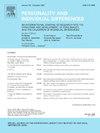Stability of Cloninger's temperament traits following a health event: Subjective and objective health status analysis from the Northern Finland Birth Cohort 1966
IF 3.5
2区 心理学
Q1 PSYCHOLOGY, SOCIAL
引用次数: 0
Abstract
Personality/temperament traits are often presumed to remain stable across various life outcomes. This longitudinal study challenges this assumption by examining changes of Cloninger's Temperament and Character Inventory traits following a severe health event, utilizing data from the population-based Northern Finland Birth Cohort 1966, combined with Finnish register data (N = 3195). We explore both health conditions diagnosed in healthcare settings and changes in individuals' self-reported health to discern the relationship between alterations in objective and subjective health and changes in temperament traits between ages 31 and 46. Our findings suggest that changes in health generally don't relate to alterations in three of the four temperament traits—novelty seeking, reward dependence, and persistence. However, we observe a significant shift in the fourth temperament trait, harm avoidance, following a health change. Both females and males reporting a decline in self-reported health become significantly more harm avoidant, irrespective of whether they experience an objective health event. Our results indicate that harm avoidance may not be entirely stable over time, and health changes, particularly regarding subjective health, are linked to variations in harm avoidance. Our results emphasize the need for caution when using harm avoidance as a predictor, particularly in the context of diverse health outcomes.
健康事件后克罗宁格气质特征的稳定性:1966年北芬兰出生队列的主观和客观健康状况分析
人格/气质特征通常被认为在各种生活结果中保持稳定。这项纵向研究利用1966年北芬兰出生队列(Northern Finland Birth Cohort 1966)的人口数据和芬兰登记数据(N = 3195),研究了严重健康事件发生后克罗宁格气质和性格量表(Cloninger's Temperament and Character Inventory)特征的变化,从而对这一假设提出了挑战。我们对医疗机构诊断出的健康状况和个人自我报告的健康状况的变化进行了研究,以发现31至46岁之间客观和主观健康状况的变化与气质特征变化之间的关系。我们的研究结果表明,健康状况的变化一般与四种气质特征中的三种--追求新奇、奖励依赖和坚持不懈--的变化无关。然而,我们观察到,在健康状况发生变化后,第四种气质特征--伤害回避--发生了显著变化。无论女性还是男性,在自我健康状况下降时,都会明显变得更加趋利避害,无论他们是否经历了客观的健康事件。我们的研究结果表明,随着时间的推移,趋利避害心理可能并不完全稳定,健康状况的变化,尤其是主观健康状况的变化,与趋利避害心理的变化有关。我们的研究结果强调,在使用伤害回避作为预测指标时需要谨慎,尤其是在不同健康结果的背景下。
本文章由计算机程序翻译,如有差异,请以英文原文为准。
求助全文
约1分钟内获得全文
求助全文
来源期刊

Personality and Individual Differences
PSYCHOLOGY, SOCIAL-
CiteScore
8.50
自引率
4.70%
发文量
577
审稿时长
41 days
期刊介绍:
Personality and Individual Differences is devoted to the publication of articles (experimental, theoretical, review) which aim to integrate as far as possible the major factors of personality with empirical paradigms from experimental, physiological, animal, clinical, educational, criminological or industrial psychology or to seek an explanation for the causes and major determinants of individual differences in concepts derived from these disciplines. The editors are concerned with both genetic and environmental causes, and they are particularly interested in possible interaction effects.
 求助内容:
求助内容: 应助结果提醒方式:
应助结果提醒方式:


